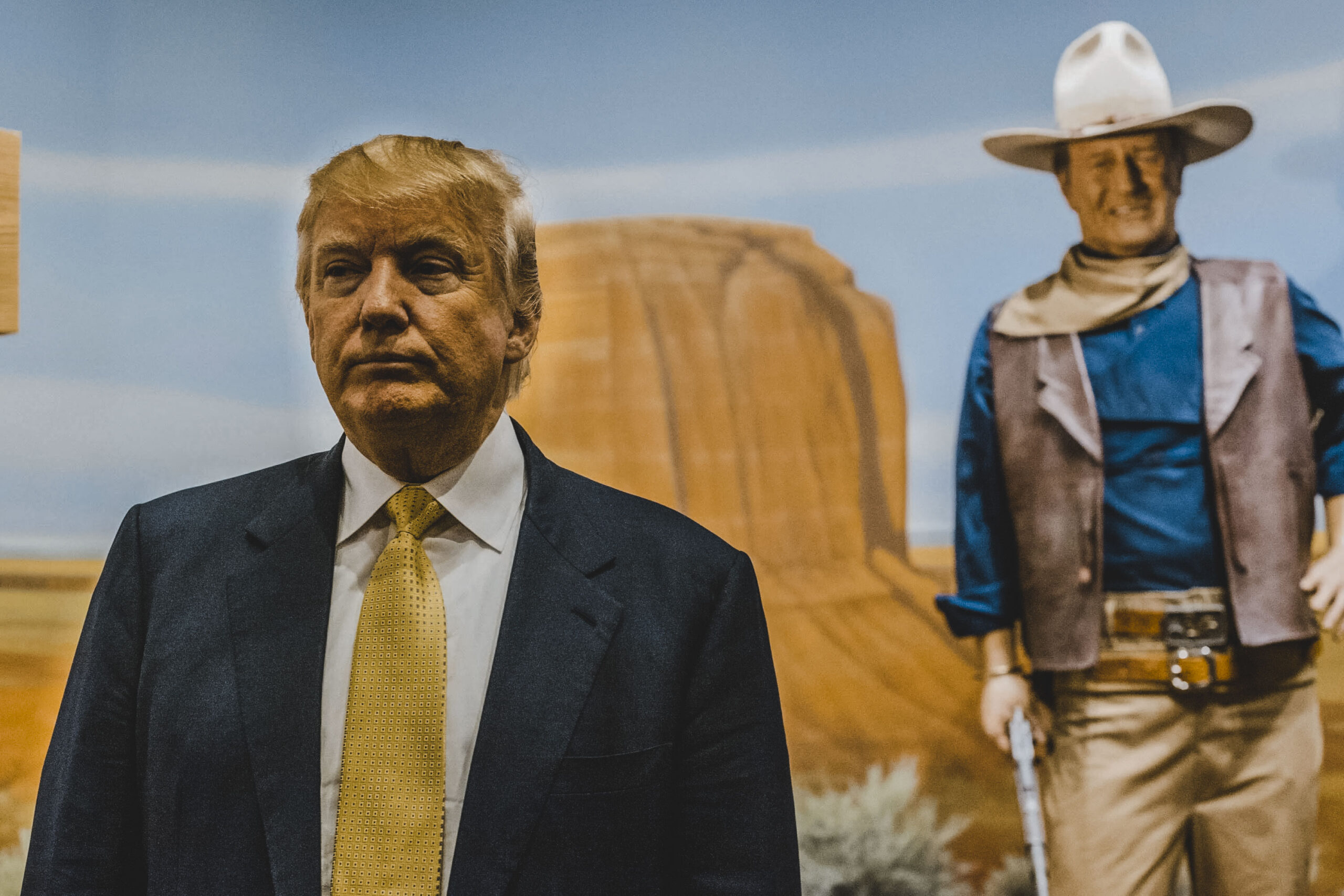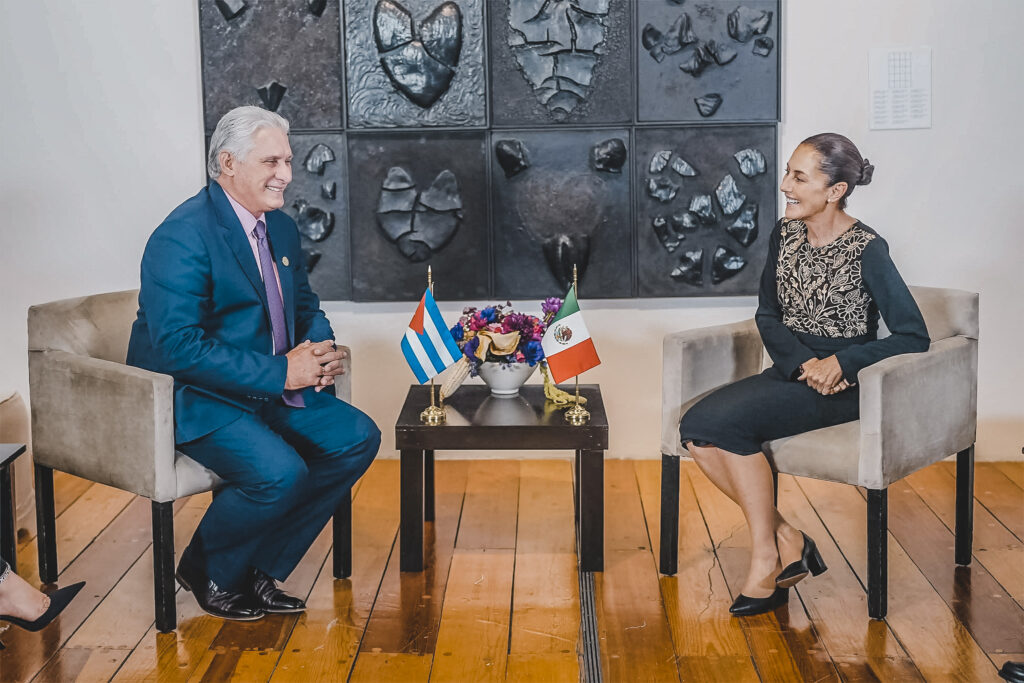Mexico & The Consequences of Trump’s Wars
This article by Saul Escobar Toledo originally appeared at Fondation Jean-Jaurès. The views expressed in this article are the author’s own and do not necessarily reflect those of the Mexico Solidarity Project.
Since his inauguration last January, Donald Trump has opened several war fronts simultaneously. These offensives, as is customary in this type of confrontation, aim to destroy the adversary or inflict maximum damage. The United States government is aware that it will have to bear the cost, and that its own forces will suffer losses, both human and material. The strategy therefore aims to ensure that its losses are less than those of the enemy, in order to obtain its surrender or its maximum weakening.
The United States government thus opened three fronts almost simultaneously, each responding to its own strategy and distinct actions, but with the same objective: to impose its will to restructure not only the global economy, but also the ideology and modes of government of many nations.
The first battlefront has opened without bloodshed: it relies on the threat of imposing tariffs on virtually every country, including strategic allies such as Canada, Mexico, and the European Union, although the main objective remains China. The goal is to economically isolate the Asian giant in order to weaken it, to conquer market share in the rest of the world, to improve the United States’ trade position by reducing its deficit, and, in doing so, to force Beijing to scale back its expansionist and military ambitions.
Donald Trump’s strategy is to attack first, then negotiate. As a result, the level of tariffs announced for each country has fluctuated constantly and been adjusted both based on the reactions of the targeted partners and as a result of internal pressure from major American companies.
He was able to secure some major victories: Canada and the European Union agreed to waive certain taxes on American technology giants operating in their territories, while Europe agreed to increase its military spending. However, no effective elimination of customs duties was achieved.
Donald Trump initially imposed a 34% tariff on China, which was later increased to 125% and then 145%, taking into account the previous rates introduced under Joe Biden. Subsequently, the two nations agreed to a compromise setting the US tariff at 30% and the Chinese tariff at 10%. However, this negotiation appears to be temporary, allowing the parties to develop more effective responses. This is a truce, not the end of the war.
The second front opened on June 21, when US aircraft targeted three nuclear sites in Iran, following several days of missile exchanges between Tehran and Israel. In the aftermath, Washington declared a truce allowing for the suspension of hostilities.
According to many observers, this is a fragile truce, although it can undoubtedly be seen as a victory for Israel and the United States. The objectives of these two powers on this front, however, remain unclear. On the one hand, Israel has acknowledged its desire to “regime change” in Iran—that is, to bring down the government of the ayatollahs and facilitate the arrival of an administration clearly aligned with its interests and those of the United States. For his part, President Trump has declared that his sole objective is to prevent Iran from acquiring nuclear weapons.
Meanwhile, Israel, with US support, has continued its offensive in Gaza, Palestine, in what amounts to an endless massacre. The stated objective here is to destroy any resistance from Hamas forces. It is not excluded that this operation will ultimately lead to the establishment of direct Israeli rule over the Palestinian territories.
What is certain is that the cost of the war is measured in a considerable number of human victims and material destruction, and that the consequences will be long-lasting in the region. The current weakening of Iran does not, in fact, put an end to hostilities.
Trump’s third front is being played out on his own territory. The enemies here are migrants and people of “Latino” appearance. The raids carried out have a clearly racist character, affecting both undocumented immigrants and some legally established residents of the United States. At the same time, cruel methods have been used, such as the deportation of migrants to third countries, where they are incarcerated in high-security facilities, far from urban centers. The objective is more political than economic or military: it is a matter of attracting a specific electorate, particularly of Anglo-Saxon origin, to consolidate the power of the Republican Party and that of Donald Trump. It is worth remembering that in November 2026, elections will be held to partially renew Congress.
These three fronts threaten to weigh on the U.S. economy. The trade war is expected to have negative consequences for the American population, particularly among the poorest. The budget passed on July 1 by the Senate and then by Congress dismantled several social programs, weakened health care and the pension system, while cutting taxes for the wealthiest. It is expected to increase the national debt by approximately $3.3 trillion over the next decade. These combined bills are likely, sooner or later, to cause a slowdown in economic growth and increase the risk of recession or even a financial crisis.
Anti-migrant policies risk creating labor market bottlenecks in some regions and sectors, while also generating anxiety and social unrest, with potential economic consequences for the United States.
In the defense sector, the lull in the Middle East will not lead to a reduction in military spending, as global tensions have been exacerbated by Washington’s military actions.
For Mexico, the trade war, the war against migrants, and the fight against drug trafficking constitute a dangerous mix. These three war fronts, using different instruments and strategies, pursue a common goal: to weaken the Mexican government and force it to negotiate under unfavorable conditions. The revision of the CUSMA [United States-Mexico-Canada Agreement, replacing NAFTA, the North American Free Trade Agreement] remains pending, and it is likely that the United States will seek to condition trade in goods and services on new, stricter provisions. This could include the introduction of the “rule of origins,” requiring Mexican exports to the United States to incorporate a higher percentage of domestically produced inputs. Washington could also pressure the Mexican government to slow the flow of people arriving at the border with the United States and to stop defending citizens who are victims of illegal arrest and imprisonment. This is what President Sheinbaum did after the Los Angeles protests, leading her to be accused of encouraging violence. The war on drug trafficking will serve as a pretext to force the Mexican government to strengthen the police and their surveillance. The recently passed laws concerning the National Guard, money laundering, communications, and the creation of a new identity card (the so-called biometric CURP 1 ) are undoubtedly well received by Washington, as all the information collected can be shared with the Americans under “coordination pacts” aimed at combating organized crime.
Finally, a slowdown in the US economy, coupled with increased tariffs and stricter export regulations, will directly affect the Mexican economy.
In conclusion, the wars waged by Donald Trump will have painful consequences for the United States, as they will for the rest of the world. Their effects are unpredictable and long-term. Mexico will most likely suffer economically, but also in terms of human rights. In the short term, our capacity to respond is limited. However, Trump’s calculations could backfire brutally: the damage inflicted on his economy, his fellow citizens, and his electorate could be catastrophic. We would then witness the fall of a tyrannical and belligerent regime. The coming months, until the November 2026 elections, will be decisive.
Saul Escobar Toledo is a researcher at the National Institute of Anthropology and History (INAH) in Mexico City and President of the Rafael Galván Institute of Labor Studies.
-
Milpa Alta: Hands Over the City
Behind an illegal, shady meeting to hastily approve a Cablebus line, lay real estate interests and a plan to force urban sprawl into the self-governing agrarian, Indigenous communities of Milpa Alta.
-
President Sheinbaum: Mexico Ships Oil to Cuba for Humanitarian Reasons
The President recalled decades of solidarity with Cuba, recalling that Mexico was the only country that opposed the US blockade on the island from the outset.
-
The Poor as Instruments, Not Allies
Welfare programs with political aims are not the same as forging political alliances with the impoverished population created by voracious neoliberal capitalism.




